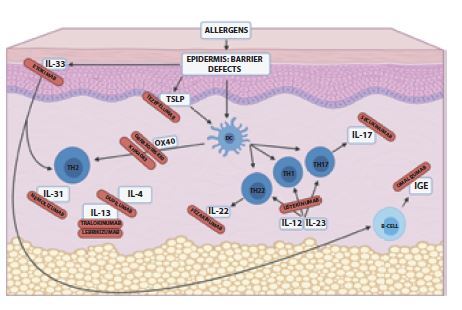Figure 1.

Pathogenesis and therapeutic targets in atopic dermatitis (AD). Modified according to Worm et al [35] and Li et al [14]. Increased skin penetration of allergens due to epidermal barrier defects results in type-2-T-helper-cells (Th2)-predominant inflammation with and without activation of dendritic cells (DC). Various cytokines contribute in the pathogenesis of AD, representing effective and future possible therapeutic targets for biologics in combating AD. Cells that activate DC or those that are activated by them, such as TSLP or OX40, represent potential targets.
